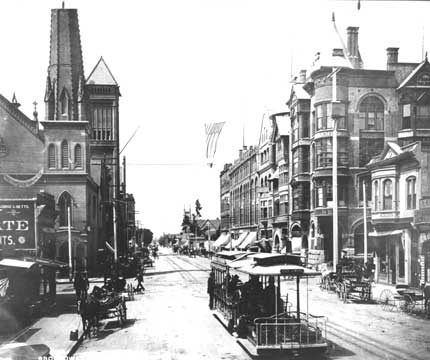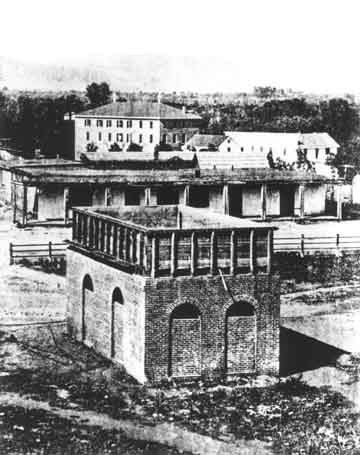Municipal Ownership - 1902*
"The City Owns Its Water" “It is not the economic theory of municipal ownership and administration of public utilities which concerns us; we are confronted with a condition and not a theory. The city owns its water, and our experience should convince us of…the farsighted wisdom of our Spanish and Mexican predecessors in holding on to the rights of the waters of Los Angeles with a grip of iron.” In 1902, the City of Los Angeles purchased the Los Angeles City Water Company for $2 million, protecting the City’s lifeline in the face of tremendous growth. With a population of more than 100,000, the City had doubled more than four times in 30 years.
The preconditions for Los Angeles’ greatness were there from the beginning. When Gaspar de Portola discovered and named the Rio Porciuncula on his mission of exploration from San Diego to Monterey in 1769, he recognized the site as ideal for settlement because of the ample water supply in the river. The 11 families who founded El Pueblo de Nuestra Senora La Reina de Los Angeles constructed the city’s first water system, a brush “toma” or dam across the river. This dam diverted water to the Zanja Madre, or mother ditch, which fed irrigation canals in their adjacent fields. Ownership of the water in the river was granted in perpetuity to the Pueblo at its founding by King Carlos III of Spain. When the City of Los Angeles incorporated 69 years later, the population of 1,610 was vested with all of the rights of the Pueblo, including these rights to the water of the Los Angeles River. By 1854 this primitive water system was large enough to become a city department. The first person in charge was given the title “zanjero” or water overseer. One year later, William Mulholland, the man who would shape the future When Mulholland came to work for the Los Angeles City Water Company in 1878, the system had been leased to a private company. He was a ditch tender, a zanjero himself, though the system had progressed from ditches and hollowed logs to include a domestic service system with reservoirs and water mains. But the zanjas served the city for 35 more years, carrying water to water wheels which lifted the water for gravity flow to homes and fields. At 31, William Mulholland became superintendent of the company. The system he oversaw included 300 miles of mains, six major reservoirs, infiltration galleries, and pumping plants. Three years later, in 1889, the company installed its first water meter at Mulholland’s instigation. |
*Reprint of LA DWP Publication at: http://wsoweb.ladwp.com/Aqueduct/historyoflaa/cityownswater.htm
Menu
- Home
- Mission
- Museum
- Mulholland Service Award
- Major Efforts
- Board Officers and Directors
- Positions on Owens Valley and the City of Los Angeles Issues
- Legislative Positions on
Water Issues
- Legislative Positions on
Energy Issues
- Recent Newsletters
- Historical Op Ed Pieces
- Membership
- Contact Us
- Search Index
 At the time though, the Board of Water Commissioners was unaware that it had also set in motion the means for Los Angeles’ future greatness. As part of the purchase of the Los Angeles City Water Company, the Commissioners had become the employers of its superintendent, William Mulholland. The City would turn to Mulholland again and again to solve the problems created by a burgeoning population in a semi-arid region.
At the time though, the Board of Water Commissioners was unaware that it had also set in motion the means for Los Angeles’ future greatness. As part of the purchase of the Los Angeles City Water Company, the Commissioners had become the employers of its superintendent, William Mulholland. The City would turn to Mulholland again and again to solve the problems created by a burgeoning population in a semi-arid region.  of Los Angeles through its water system, was born in Belfast, Ireland.
of Los Angeles through its water system, was born in Belfast, Ireland.